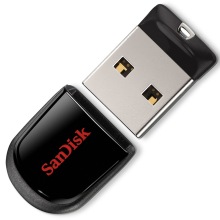Many people ,including myself, prefer to install FreeNAS on a USB flash drive ,to save internal HDD drive slots,and in the former version doing this is quite OK,as it treat the boot media as almost read-only,
But in FreeNAS 9.3+ the boot drive was switched from UFS to ZFS,so it writes to the boot media a lot more
and the offical documentations says
but nowaday almost all the USB flash drives on the market are based on the TLC(Triple-Level-Cell) Flash chips.
This kind of flash chip is cheap and wear out very fast(most of 'em can only be rewritten(P/E) for about 300-500 times )
So, besides using 2 or more drives for a mirrored syspool(Though TLC flash drives is very cheap and affordable for a mirrored configuration,I really don't want to worry about a 'DEGRADED' syspool all day long),Is there any USB flash drive models recommended?
I've tested most famous brands in local market - Sandisk,Lexar,Kingston,Toshiba and PNY,all of 'em are TLC.
But in FreeNAS 9.3+ the boot drive was switched from UFS to ZFS,so it writes to the boot media a lot more
and the offical documentations says
- when using a USB stick, it is recommended to use a name brand USB stick as ZFS will quickly find errors on cheap, not well made sticks.
but nowaday almost all the USB flash drives on the market are based on the TLC(Triple-Level-Cell) Flash chips.
This kind of flash chip is cheap and wear out very fast(most of 'em can only be rewritten(P/E) for about 300-500 times )
So, besides using 2 or more drives for a mirrored syspool(Though TLC flash drives is very cheap and affordable for a mirrored configuration,I really don't want to worry about a 'DEGRADED' syspool all day long),Is there any USB flash drive models recommended?
I've tested most famous brands in local market - Sandisk,Lexar,Kingston,Toshiba and PNY,all of 'em are TLC.


